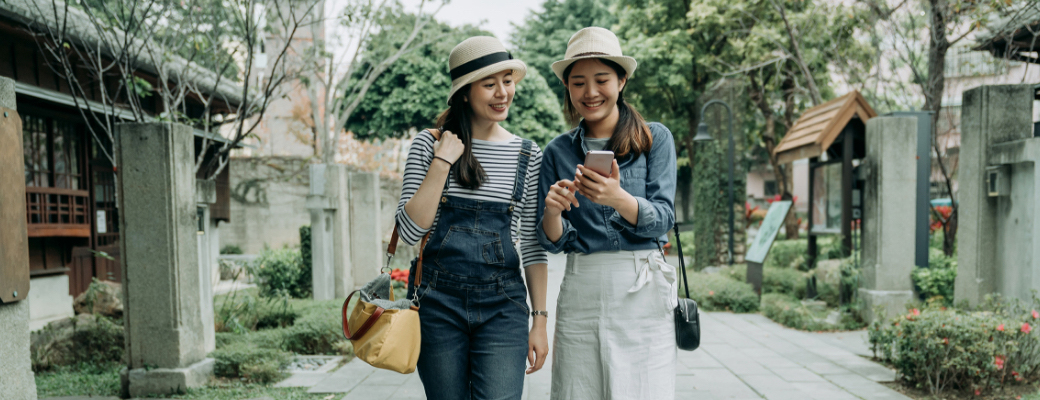
Train Trips
Discount Tickets! Limited Express Rapi:t connects Kansai Airport and Namba in a minimum time of 34 minutes.

What is the Taiko Bridge(reversed bridge) at Sumiyoshi Taisha?
Sumiyoshi Taisha, the headquarters of approximately 2,300 Sumiyoshi Shrines nationwide, is home to a famous arched bridge known as the "Taiko Bridge." In this article, let's explore the Taiko Bridge at Sumiyoshi Taisha and introduce other points of interest as well.
The term "reversed bridge" refers to an arched bridge where the center is elevated. Within the category of arched bridges, those spanning rivers, waterways, and ponds in Japanese gardens or temple grounds are often referred to as "Taiko Bridges." This nomenclature is due to their semi-circular shape resembling a taiko drum when viewed directly from the side.
It's worth noting that rivers and ponds located in front of the main shrine of a Shinto shrine typically serve as a boundary between the human world and the realm where deities reside. Crossing a bridge over such sacred waters symbolizes entering a sacred space, so it's advisable to do so with a sense of reverence.
Among the Taiko Bridges, one particularly famous example is the Taiko Bridge at Sumiyoshi Taisha. This bridge, approximately 20 meters in length, 3.6 meters in height, and with a width of around 5.5 meters, has a steep incline of about 48 degrees, making the other side of the bridge completely invisible.
There is a belief that merely crossing this Taiko Bridge brings purification. Many visitors to Sumiyoshi Taisha cross the Taiko Bridge before paying their respects at the main shrine.
Interestingly, the current stone bridge supports are said to have been dedicated by Yodogimi, the wife of Toyotomi Hideyoshi, during the Keicho era, as a prayer for the growth of Toyotomi Hideyori.
In addition to the Taiko Bridge, Sumiyoshi Taisha has various other attractions.
Gosho Gozen
Located on the south side of the main sanctuary, Gosho Gozen is the place where the first enshrinement took place approximately 1800 years ago. Visitors can find stones inscribed with the characters "五" (five), "大" (big), and "力" (power) among the pebbles at Gosho Gozen. Collecting one of each and creating a set is believed to bestow physical strength, intelligence, financial prosperity, happiness, and longevity, fulfilling one's wishes.
Omokaru Ishi
Found about a 2-minute walk southeast from the main shrine at the subsidiary shrine "Ohtoshi-sha," Omokaru Ishi is a sacred stone used to divine whether one's wishes will come true. After offering prayers and lifting the stone to assess its weight, lifting it again and feeling it lighter than the initial lift is believed to indicate the fulfillment of the wish.
Issun Boshi no Owan
In the precincts of the subsidiary shrine "Tanedari-sha," there is a bowl associated with the folk tale "Issun Boshi." Interestingly, Sumiyoshi Taisha has a deep connection to "Issun Boshi." Legend has it that the elderly couple praying for a child in Naniwa (present-day Osaka) resorted to Sumiyoshi Taisha. The location where Issun Boshi set sail for Kyoto was also said to be near Sumiyoshi Taisha, specifically at "Sumiyoshi no Ura" (Sumiyoshi's Bay).
This article has introduced the Taiko Bridge at Sumiyoshi Taisha and other points of interest. The steep incline of approximately 48 degrees makes the large Taiko Bridge a sight to behold. Don't forget to explore Gosho Gozen, Omokaru Ishi, and Issun Boshi no Owan. By crossing the Taiko Bridge and paying your respects at Sumiyoshi Taisha, you may receive various blessings.

Train Trips
Discount Tickets! Limited Express Rapi:t connects Kansai Airport and Namba in a minimum time of 34 minutes.

Experiences in Namba
A spectacular and moving performance,The deep culture of "sumo" boasts a history of over 1,500 years.
Fun-filled sumo entertainment

Outdoor
Enjoy Camping on Tomogashima! Tips and Access Information

